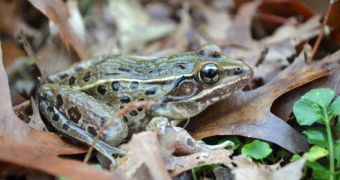A collaboration of scientists from a number of American universities announce the discovery of a new species of leopard frogs in marshes and ponds near New York City, within sight of the State of Liberty.
Scientists with the research team say that they mistook this frog for a more common type of leopard frog for many years, until a closer study revealed the difference. It is very uncommon for new species to be discovered close to cities.
Most discoveries of this nature now take place in some of the most remote parts of the world, such as for example deep within rainforests, underwater, or at the poles. This is why the new finding came as such a surprise to investigators.
The work was conducted by experts from the University of California in Los Angeles (UCLA) and Davis (UCD), the Rutgers University, and the University of Alabama. “For a new species to go unrecognized in this area is amazing,” UCLA biologist Brad Shaffer explains.
He and his team were able to carry out the new investigation thanks to funds provided by the US National Science Foundation (NSF) Division of Environmental Biology (DEB). The study is detailed in the latest issue of the journal Molecular Phylogenetics and Evolution.
“Many amphibians are secretive and very hard to find, but these frogs are pretty obvious animals. This shows that even in the largest city in the US, there are still new and important species waiting to be discovered,” adds Shaffer, who was also based at UCD.
The newly-identified species now has a range centered around the Yankee Stadium in the Bronx, which means that at one point it may have occupied Manhattan. Most likely, the amphibians were driven out when the area was heavily settled by colonists.
Some of the factors that severely affected the health of all leopard frog populations include habitat destruction, disease, invasive species, pesticides and parasites, explains University of Alabama biologist and NSF DEB program director, Leslie Rissler.
“These frogs were probably once more widely distributed. They are still able to hang on. They're still here, and that's amazing,” the investigator goes on to say. Scientists with the research group say that the investigation has some serious implications as well.
“This raises conservation concerns that must be addressed,” Rutgers University ecologist Joanna Burger concludes.

 14 DAY TRIAL //
14 DAY TRIAL //